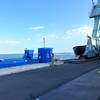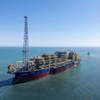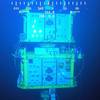source: The World Marine Propulsion Report
Marine propulsion systems are expected to grow to become a $5 billion market by 2007. Over the next five years vessel tonnage delivered by yards is expected to increase by 4% while vessel numbers fall by 10%. However, total propulsion power should increase by 8% when compared to the 1997-2002 period. These are amongst the results of a new study, ‘The World Marine Propulsion Report’, to be published in November by analysts Douglas-Westwood.
Addressing delegates to the annual Lloyd’s List Ship Propulsion Conference in London today, Douglas-Westwood managing director John Westwood said, “The overall picture is of fewer but larger vessels with bigger engines. Despite a reduction in the number of vessels delivered by yards over the next five years, we expect total propulsive power to continue to increase.”
Using information from the Lloyd’s Register-Fairplay databases, ‘The World Marine Propulsion Report’ analyses engine deliveries by type and manufacturer for the 9,789 vessels built over the past five years worldwide and shows the market shares established for all the significant players. The results show the major shift in market share amongst the leading engine companies and the relative decline of the South East Asian designs.
A specially developed model is used to forecast the market over the next five years. This takes into account the major factors that are likely to impact on the sector such as oil prices, increasing vessel sizes, changes in global trade patterns etc.
Commenting on the results, study lead author Barney Parsons said, “The major driver for vessel construction is the growth in seaborne trade. A large increase in vessel orders followed the sharp increase of seaborne trade in 1998. Looking forward five years, we believe that growth will be highest in 2004 as the world economy recovers somewhat. The effect of the 2000 order boom will be seen in ship deliveries up to 2003, and then we believe a modest return in confidence will allow yard tonnage output to increase steadily up to 2007.
“Possible major events that could threaten these forecasts are a long-term war in the Middle East or elsewhere which could lead to a general turndown in the world economy, or a very high oil price, which could depress the level of world trade and oil consumption and so disrupt tanker ordering activity.
“Although gross tonnage output is expected to remain relatively stable over the forecast period, we believe that the numbers of vessels constructed will be lower than in the 1997-2001 period. However, average vessel sizes will be larger and consequently their power requirements greater. This means that the value of the market for propulsion systems will increase.
“We expect that there will be an increasing market share for Chinese shipyards, mainly at the expense of Japanese yards. However, the value of propulsion systems going into Japanese vessels will remain stable as the move towards higher-powered vessels continues.
“Container vessels will continue to gain importance for the propulsion market as the average vessel size grows and by 2007 we expect that they will account for the same amount of propulsion system value as the Bulk/General Cargo sector and Tanker sector. Cruise and Passenger vessel output is expected to decline slightly after 2005 as present cruise vessel orders are delivered into a well supplied market.
“Amongst the engine makers we expect MAN/B&W along with Wärtsilä to continue to dominate and also that Caterpillar will hold its market share.
“Many of the issues that are talked up in the marketplace – fast ships, turbines and newer forms of propulsion and energy generation – will have very little effect on the overall value of the market. We do not foresee a significant change in the way that vessels are propelled in the forecast period, although many technological and environmental developments described in the report will have gradual effects at the edges of the market in the longer term.”
Sponsored Content
Experience Custom Yacht Signs and Designs Tailored to Perfection!

Featured videos

FloCloud: Tracking, Documenting Weld Efficiency

Energy Transition in Maritime is More than the Fuel
April 2025
 Read the Magazine
Read the Magazine

 Read the Magazine
Read the Magazine
This issue sponsored by:

Looking Back: U.S. Maritime Industry Steps Up in Wake of FSK Bridge Collapse
Subscribe for
Maritime Reporter E-News
Maritime Reporter E-News is the maritime industry's largest circulation and most authoritative ENews Service, delivered to your Email five times per week







